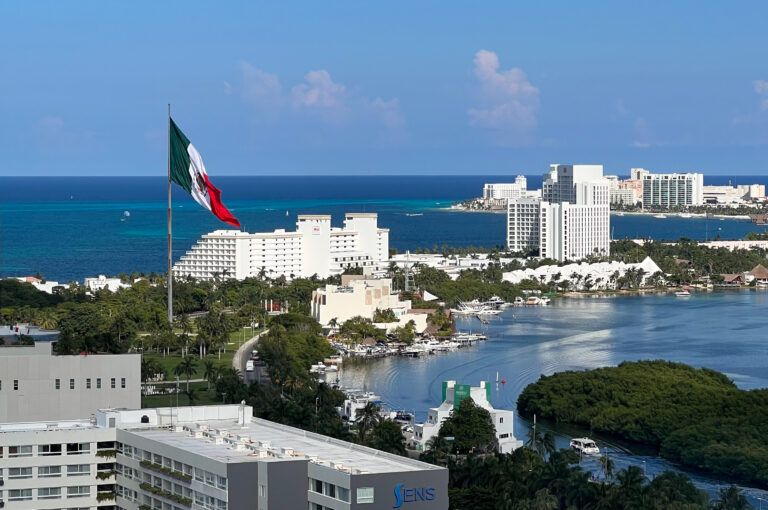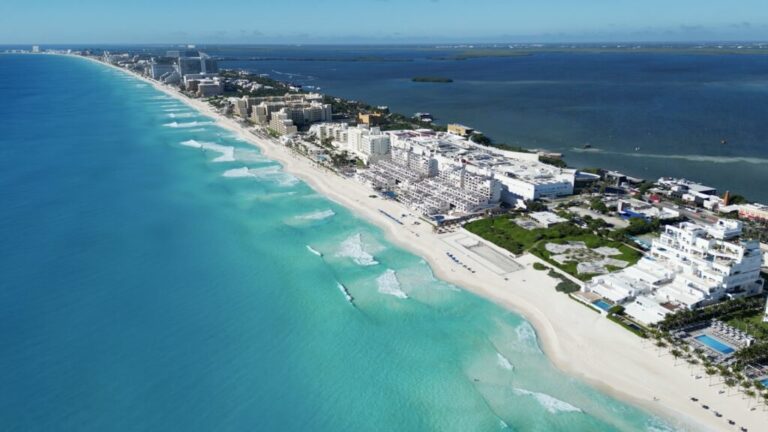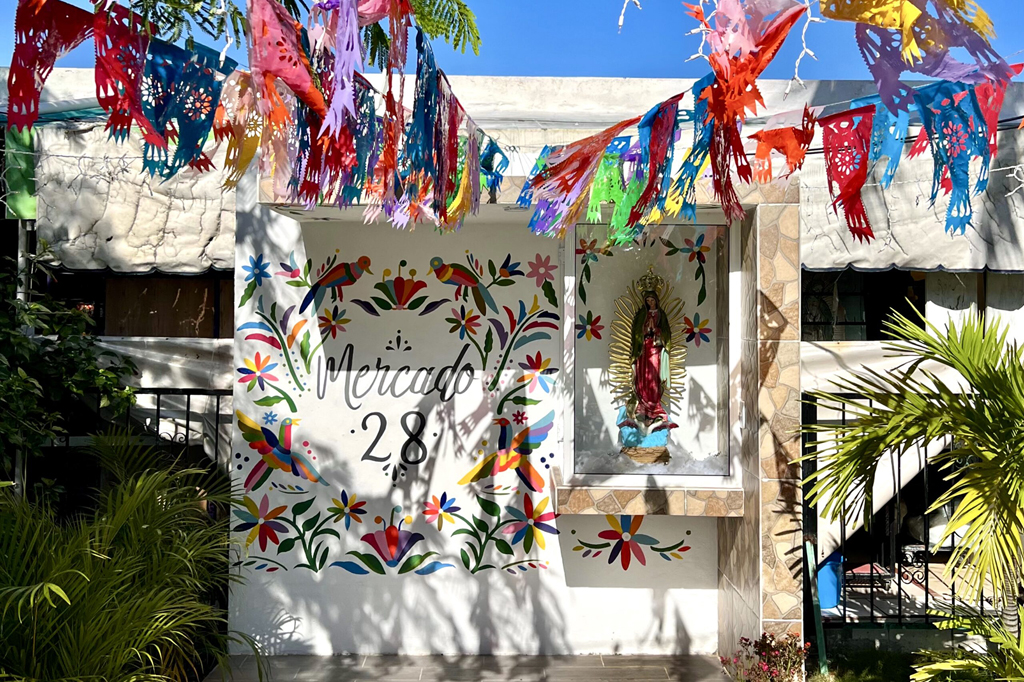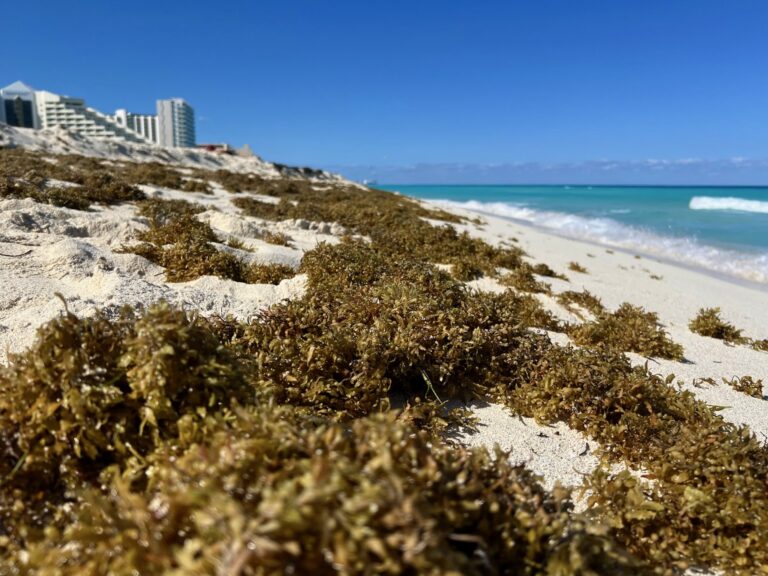
You are planning a trip to Cancun or Riviera Maya for that fix of sun and naturally you want this trip to be perfect; after all, you have been working hard and need this vacation. However, pesky algae—specifically sargassum, or simply seaweed—might make your stay a bit less enjoyable. In our article, we are going to break down what it is, where it comes from, and what to know about the seaweed season in Cancun.
What Is That Smelly Pile on the Beach?
Sargassum is a type of brown seaweed that forms in the open ocean. There are over 350 known species of brown algae. The two main species that often wash up on beaches are sargassum natans and sargassum fluitans. During the seaweed season in Cancun, these species become more prominent.
Unlike many seaweeds that attach to the seafloor, both of these species float freely. This is thanks to small, gas-filled bladders called pneumatocysts that keep them buoyant. Sargassum natans is characterized by its branching body with narrow, leaf-like blades, while sargassum fluitans has broader, leaf-like blades. This difference in leaf shape helps distinguish them from each other.
Sargassum fluitans, commonly known as broad-leaved gulfweed, is particularly notable for its free-floating nature. It primarily inhabits the Atlantic Ocean, especially the Sargasso Sea. It forms extensive mats on the ocean’s surface due to its buoyant nature.
Before 2011, sargassum blooms were a natural part of the marine ecosystem, mainly found in the Sargasso Sea. However, in 2011, a massive sargassum bloom erupted in the Atlantic, blanketing coastlines far beyond its normal range. This unprecedented event marked a turning point, triggering recurring sargassum influxes that now pose environmental and economic challenges across the Caribbean and Gulf of Mexico. These influxes have become a recurring environmental and economic crisis for coastal regions.
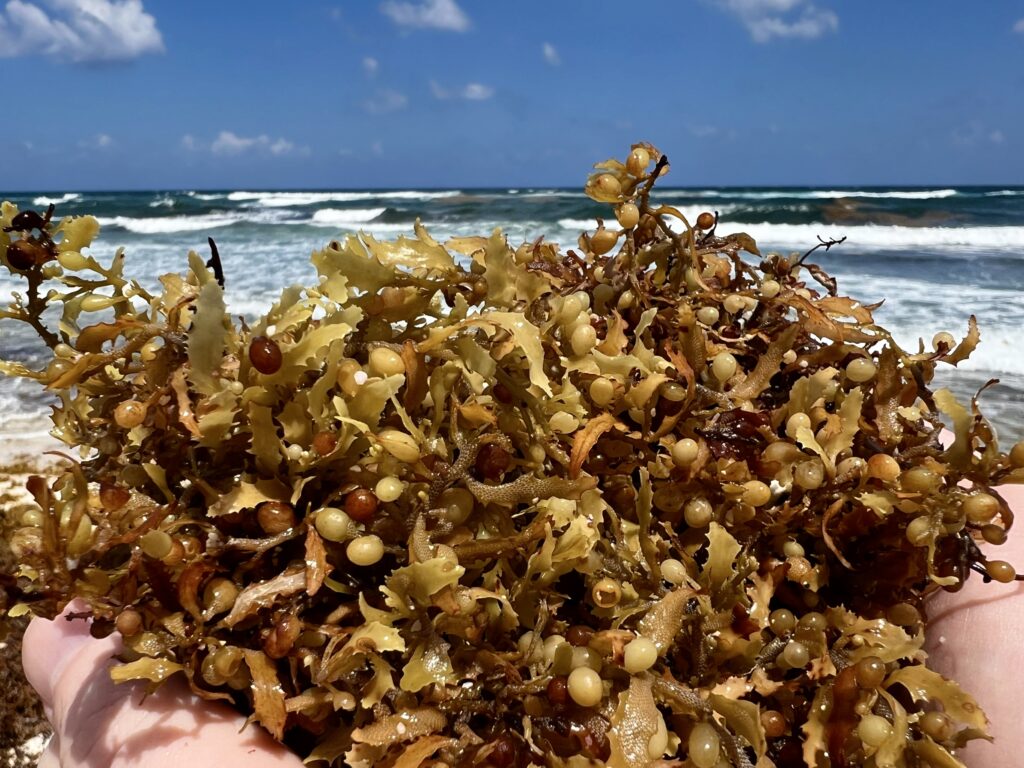
Where Does It Come From?
Historically, the Sargasso Sea, located off the coasts of Bermuda and Florida, has been the primary source of sargassum, a region characterized by a large system of circulating ocean currents (a gyre) that naturally accumulates the seaweed. Some of this seaweed drifts out into the wider Atlantic, occasionally affecting Cancun during the seaweed season.
Recent studies indicate that the massive sargassum strandings observed since 2011 may also originate from tropical clusters outside the traditional Sargasso Sea. Researchers from the University of South Florida suggest that upwelling events off the West African coast, which bring nutrient-rich waters to the surface, could promote sargassum growth.
Additionally, global warming is considered a contributing factor. It alters ocean currents like the Atlantic Meridional Overturning Circulation (AMOC), potentially facilitating the displacement of sargassum beds. Over the past 50 years, a 15% reduction in AMOC flow has been observed. This may have led to changes in water composition and increased nutrient availability, which may enhance sargassum proliferation.
While the Sargasso Sea remains a significant source of sargassum, other regions, particularly off the West African coast, have become notable contributors to the seaweed influxes affecting various coastlines.
How Does Seaweed Affect Humans?
When sargassum washes ashore and begins to decompose, it releases hydrogen sulfide (H₂S) gas. Exposure to H₂S can lead to respiratory issues, eye irritation, and, in severe cases, neurological effects. Individuals with pre-existing respiratory conditions, such as asthma, are particularly vulnerable.
Decomposing sargassum also emits ammonia, which can cause respiratory discomfort and irritation of the mucous membranes. Prolonged exposure may exacerbate respiratory ailments.
Sargassum can absorb and concentrate heavy metals, including arsenic, from seawater. This poses risks if people use the seaweed as fertilizer or feed it to animals. How so? Down the pipeline, it can potentially lead to heavy metal exposure in animals and later in humans.
Foul odors coming from piles of decomposing sargassum may affect the quality of life in coastal areas, leading to potential health risks. Residents, tourists, and workers involved in cleanup efforts are at an increased risk of exposure to harmful emissions.
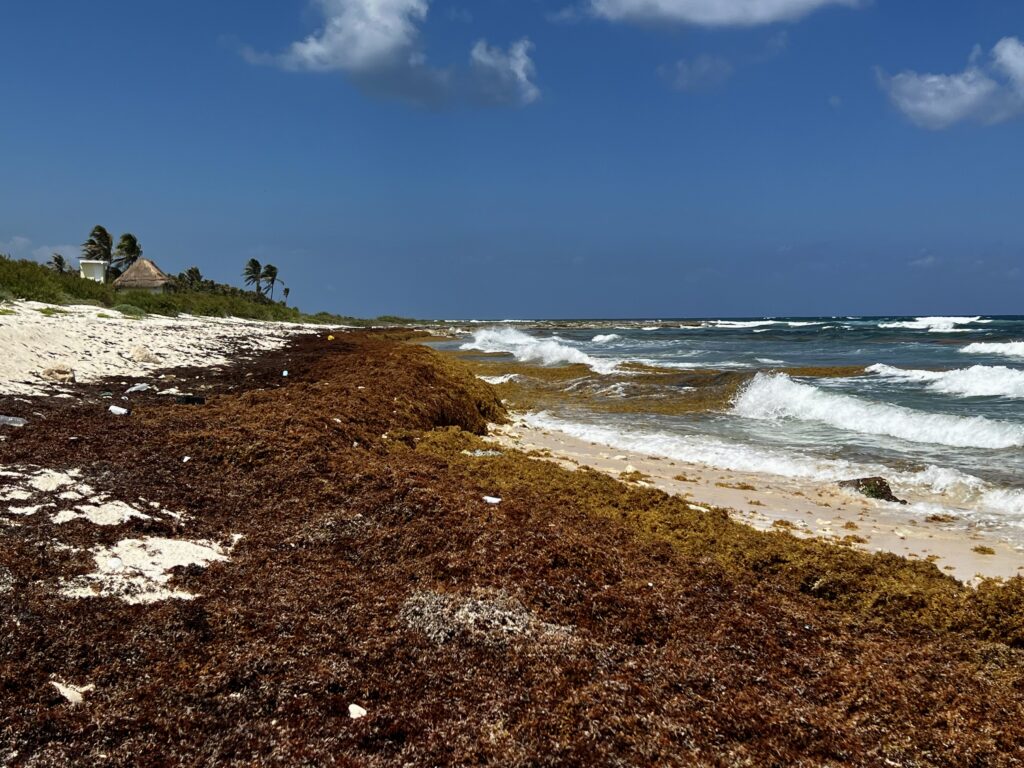
How Does Seaweed Affect Cancun and the Riviera Maya?
Since spring 2018, seaweed, particularly sargassum, has become a persistent issue along the Mexican Caribbean coast, impacting both Cancun and the Riviera Maya. While sargassum has always been a natural occurrence, the sheer volume reaching the shores since 2018 has been overwhelming. This is how this situation has become a major environmental and logistical challenge for everyone, not only tourists. Here’s what you need to know:
The Impact of Sargassum
When sargassum accumulates on beaches, it decomposes, producing a foul smell and making it unpleasant or impossible for people to swim. The seaweed also discolors the water and harms marine ecosystems by depleting oxygen and harming aquatic life. Despite efforts by the Mexican authorities to install barriers to prevent the seaweed from reaching the shore, these methods have had limited success. Cleaning up the seaweed manually remains the most effective solution, but it’s labor-intensive and expensive.
Seaweed Season in Cancun and Riviera Maya
The seaweed season in Cancun typically runs from mid-to-late spring through late autumn. However, it’s important to note that there are no definitive start and end dates; it’s more of a rule of thumb. As mentioned, the migration of sargassum mats depends on numerous factors, making it unpredictable.
During winter months, the amount of sargassum tends to decrease significantly. However, it may or may not disappear entirely, because factors like wind speed, direction, and ocean currents influence the influx of seaweed. Sargassum levels can vary dramatically even between nearby beaches. One day the beach might be pristine, and the next, it could be blanketed with heaps of this decaying mass. This unpredictability makes planning difficult for tourists seeking clean beaches. But there is a number of things you can do. More on that below.
Cleaning and Maintenance
Resorts and hotels, motivated to maintain an attractive beachfront for their guests, clean their beaches regularly. Public beaches are maintained by municipal services, which also aim to ensure a good experience for visitors but may face resource limitations. While clean-up teams work diligently, they are not always able to keep up with the influx, especially during peak sargassum seasons.
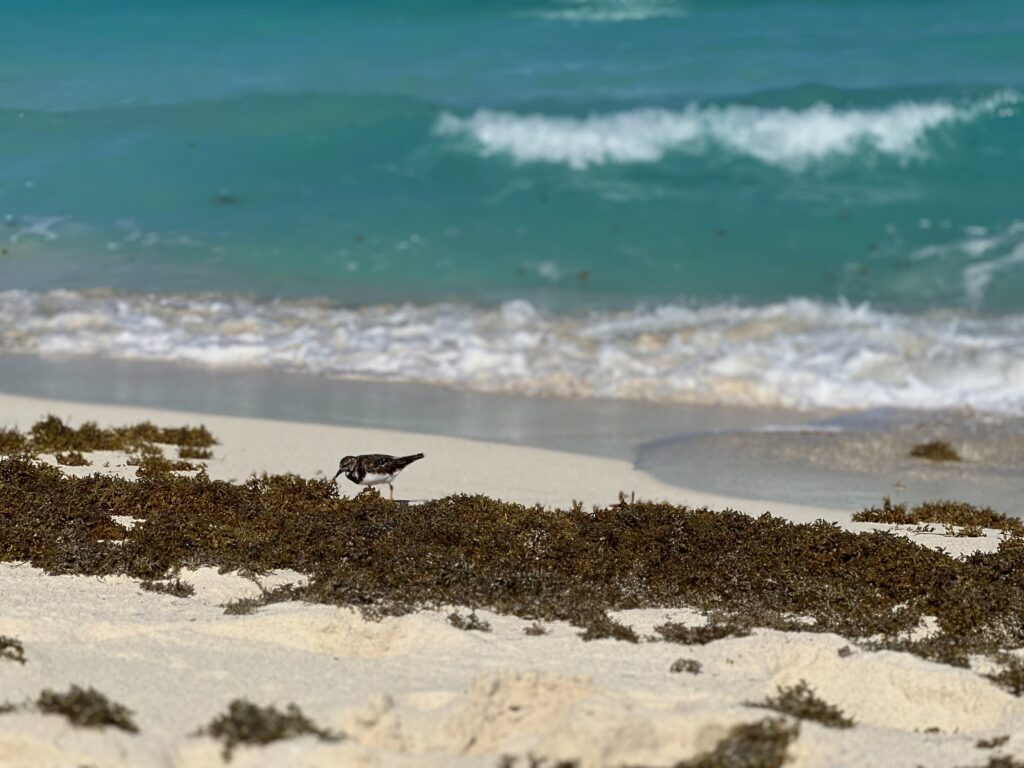
Tips for Tourists: Forewarned is Forearmed
If you’re planning a trip to the Caribbean, understand that the presence of sargassum may vary day by day and beach by beach. While you may find a clean beach one day, there’s no guarantee it will stay that way. Resorts are generally more proactive in maintaining their shorelines, so staying at a hotel with a private beach might be a good idea if pristine sands are a priority for your trip.
While the situation has improved during winter months, sargassum is no longer just a seasonal issue, it’s something the region is adapting to year-round. Municipalities and businesses are doing their best, but natural factors often outweigh human efforts.
What Else Can We Do in This Situation?
Luckily for us, ever since the first major inundation of seaweed and the havoc it wreaked on coastal communities, scientists worldwide have been paying close attention to this pesky algae. Their efforts resulted in a number of extremely useful tools that scientists use to keep track of the situation with sargassum. We gathered some of these tools here for you.
For instance, a team of scientists from NOAA (National Oceanic and Atmospheric Administration) and the University of South Florida joined forces to create an experimental tool that provides weekly updates on which regions in the Caribbean might be hit by sargassum. They use satellite images to spot the seaweed and combine them with ocean current models to predict where it’s likely to wash ashore. While a couple of week’s notice isn’t much, it’s better than nothing. It gives you a little wiggle room to plan accordingly.
There is an alternative tool by the FORESEA project. It was active from 2020 to 2022, and was a collaborative research initiative funded by the French National Research Agency (ANR), the Guadeloupe Region, and the Territorial Community of Martinique. This tool allows you to forecast the situation up to seven months into the future. However, you should understand that the further out into the future you go, the less precise the forecast becomes.
And last, but not least, Sargassum Monitoring is an independent organization that dedicates its resources to tracking and forecasting the presence of sargassum seaweed across affected regions. Established in 2018, it has become the world’s leading citizen science network focused on sargassum. They combine scientific data with community involvement. This makes them a great resource for understanding and addressing the challenges posed by sargassum seaweed.
Web Cameras
And finally, if the seaweed season in Cancun caught you by surprise when you arrived, don’t think you’re alone in your quest to find a pristine, seaweed-free Caribbean beach. Thousands of tourists and locals are asking the same question daily. So, what can you do if you’re planning a beach day and want to check the seaweed situation in advance?
Fortunately, many hotels now have live webcams streaming 24/7, giving you a real-time view of their beachfront conditions. It’s a great way to see if the coast is clear—literally! Here’s a useful resource to check out. With tools like these, you can make a more informed decision and enjoy your beach day with fewer surprises.
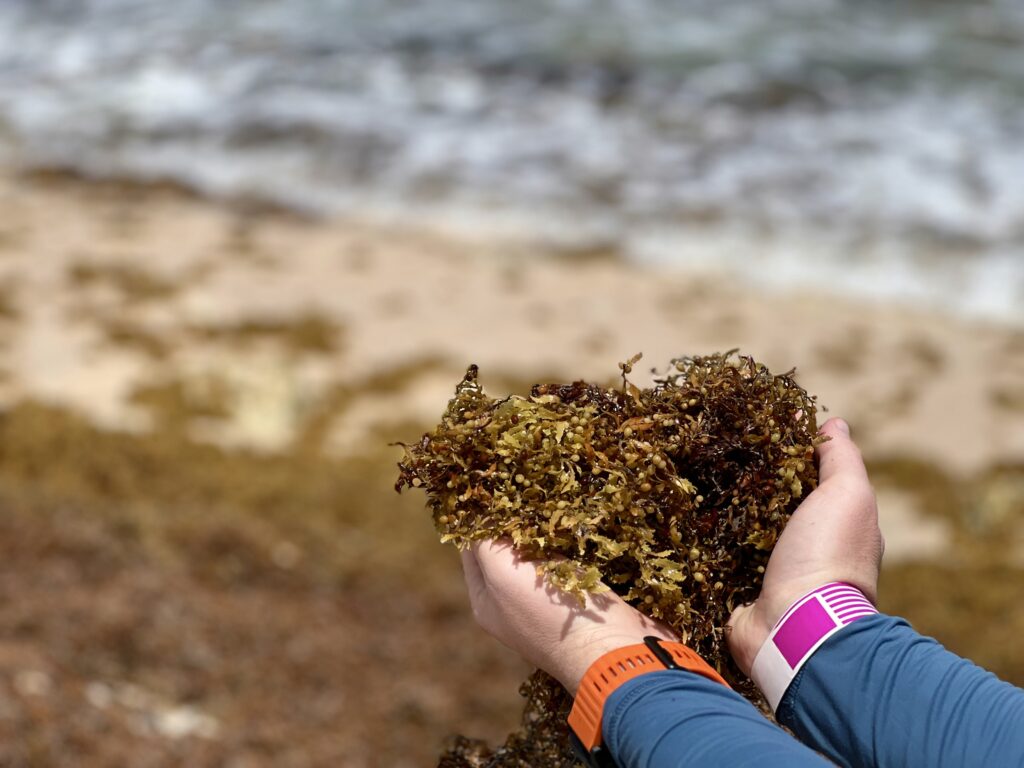
Seaweed Season in Cancun: Conclusions
Seaweed can definitely put a damper on the picture-perfect image of the Caribbean beaches. However, it hasn’t stopped tourists from flocking to Mexico’s Riviera Maya. Visitors have been coming, are still coming, and will continue to come for a good reason—there’s so much more to this paradise than just white-sand beaches and turquoise waters.
For starters, the Riviera Maya is rich in history. You can explore world-famous archaeological sites like Chichen Itza, Tulum, and Ek Balam. Want more? Check out Coba, where you can still climb ancient pyramids, or the lesser-known Muyil, nestled in the Sian Ka’an Biosphere Reserve.
Beyond history, the region’s natural beauty is absolutely breathtaking. How about taking a dip in some of the stunning cenotes? Lush jungle usually surrounds these natural sinkholes full of crystal-clear, refreshing water. They are perfect for cooling off on a hot day. If you’re up for something truly unique, head to the Pink Lakes of Las Coloradas or spend a day exploring the serene Bacalar Lagoon, famously known as the “Lake of Seven Colors.”
And let’s not forget the fun and adventure offered by the Xcaret family of theme parks. With something for everyone, from cultural performances to water-based activities, these parks are a hit for families, couples, and solo travelers alike.
So, while seaweed may occasionally wash ashore, the Riviera Maya has so much to offer that you’ll hardly notice. There’s always something new to discover!

